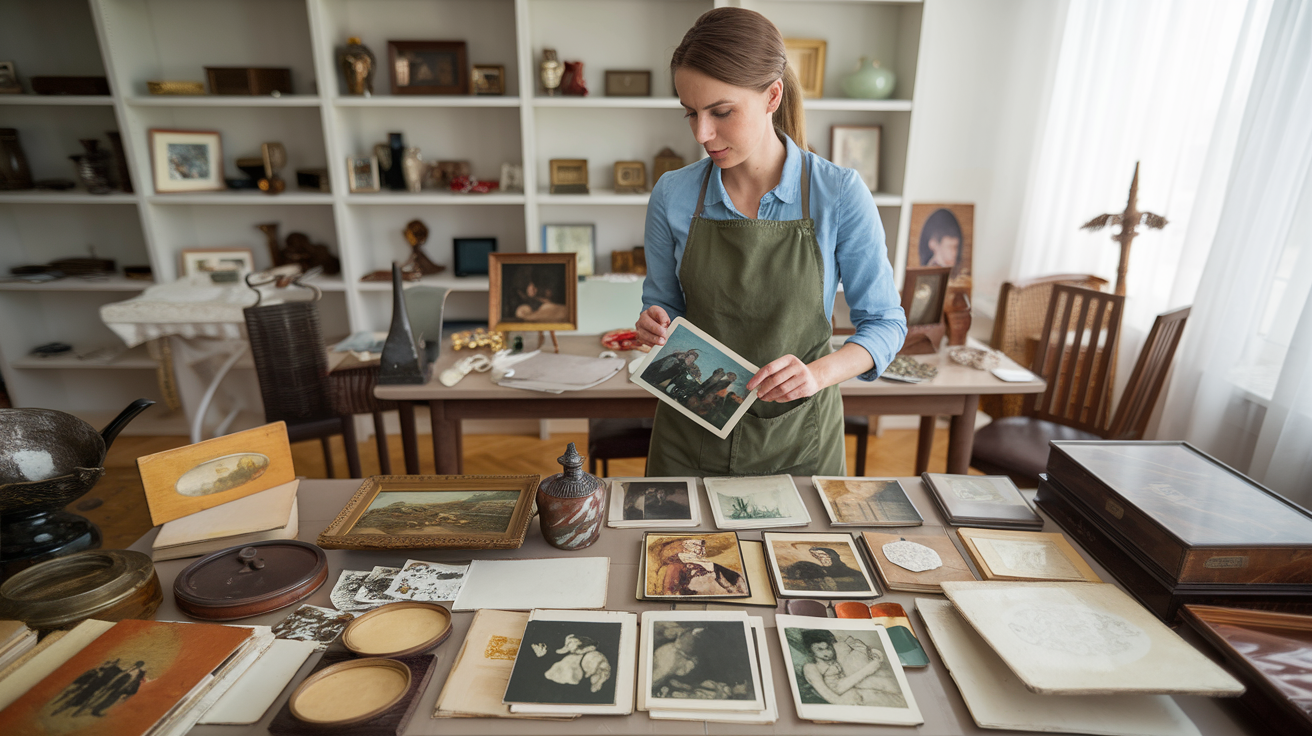You’ve got a treasure trove of family history. But it’s a mess.
Sound familiar?
Let’s turn that chaos into a goldmine of organized information. Here’s how to transform from a family history hoarder into a bonafide genealogical historian.
Assess Your Collection
First things first. Take stock. What’ve you got? Photos? Documents? Great-grandma’s thimble collection? Spread it all out. Categorize. Prioritize.
Ask yourself: What matters most? What tells your family’s story best? Be ruthless. Not everything can be a priority.
Create piles. Sort by type. By era. By family branch. Whatever makes sense to you. This is your rodeo.
Create a Digital Catalog
Welcome to the 21st century, historian. Time to go digital. Pick a cataloging system. There are plenty out there. Find one that works for you.
Document everything. Photos. Descriptions. Where’d it come from? Who owned it? When? The more detail, the better.
Think like a museum curator. Every artifact has a story. Your job? Capture it.
Implement Proper Storage Solutions
Proper storage is key. It’s the difference between preservation and destruction. Invest in acid-free boxes for documents. Photo-safe albums for those precious snapshots.
Climate control isn’t just for your comfort. Your artifacts need it too. Humidity is the enemy. Fight it.
Remember: today’s careful storage is tomorrow’s family treasure.
Develop a Naming and Labeling System
Consistency is king. Create a naming convention for digital files. Stick to it. No exceptions.
For physical items, use archival-safe labels. Include names. Dates. Relationships. Make it easy for future generations.
Your great-grandkids will thank you. Trust me.
Establish a Workflow for New Acquisitions
The flood never stops. New items will come. Be ready.
Set up a quarantine area. New stuff goes there first. Process regularly. No backlogs allowed.
Integrate new finds into your system. Update your catalog. It’s a living document.
Digitize Your Collection
Scanning isn’t just for offices. It’s your new best friend.
Invest in quality equipment. It’ll pay off. Create high-res scans of documents and photos.
Got 3D items? Consider 3D scanning. Technology is your ally. Use it.
Implement a Backup Strategy
Ever heard of the 3-2-1 rule? Live by it.
Three copies. Two different media. One off-site. It’s not paranoia. It’s prudence.
Don’t forget physical copies of key documents. Store off-site. Safety first.
Create a Research-Friendly System
Cross-reference everything. Link items to your family tree. Create a tagging system.
Make searching easy. For you. For others. Think like a librarian.
Consider timelines. Narratives. Group artifacts by story. It’s not just stuff. It’s history.
Share and Collaborate
Don’t hoard your hard work. Share it. Family members will appreciate it.
Contribute to online platforms. Ancestry.com. FamilySearch. Spread the wealth.
Consider donating copies to local historical societies. Your family history is community history.
Maintain and Preserve
Schedule regular check-ups. For your artifacts, not you. Though that’s important too.
Learn basic conservation. It’s not rocket science. But know your limits.
When in doubt, call a pro. Some things are worth the investment.
Plan for the Future
You won’t be around forever. Harsh, but true. Plan for it.
Develop a succession plan. Who gets what? Who continues the work?
Educate your family. Make them understand the value. Not just sentimental. Historical.
Conclusion
You’ve done it. Hoarder to historian. Chaos to order. Mess to archive.
It’s not just about organizing stuff. It’s about preserving stories. Lives. Legacies.
Your ancestors lived it. You’re saving it. For whom? The future. Your legacy.
Start now. Future generations are counting on you. No pressure.
Additional Resources
Want to dive deeper? Here’s your lifeline:
- “Preserving Your Family Photographs” by Maureen A. Taylor. Read it.
- “How to Archive Family Keepsakes” by Denise May Levenick. Game-changer.
- Preserving Family Photographs: 1839 to the Present webinar by Maureen Taylor
- Archival Quality Boxes
Remember: every artifact tells a story. You’re not just organizing. You’re storytelling. Your family’s epic saga. Make it count.
Now go. Transform that mess into a masterpiece. Your ancestors are watching. Make them proud.



I work at Gen library in Texas Co Mo. For years I help others all the time but I never get back to organizing I got a new scanner iI will try to get photos scanned into family tree maker so it can be found in order. I only have 1 kid left and if not on computer it will go to trash. I worked so hard I have to get to me. Mine I need my butt kicked.
Amazingly great guidance! I have made a good start and worked on it over the years. I wish I had known this information when I started but it’s never too late to regroup! Thank you ☺️
Same here! Thank you for this. I have been working on this for the past year, and I have made strides, but I still have a long way to go. Life keeps getting in the way! Everything you said is so very worthy of being said. Thank you for this post, because you have boosted my spirits to continue.
Thank you for today’s post. I needed it. I have photos and documents that need to be organized. Now I can start to get ready to start organizing and storing everything the way it should be instead of boxes, cans, and stuffed into folders.